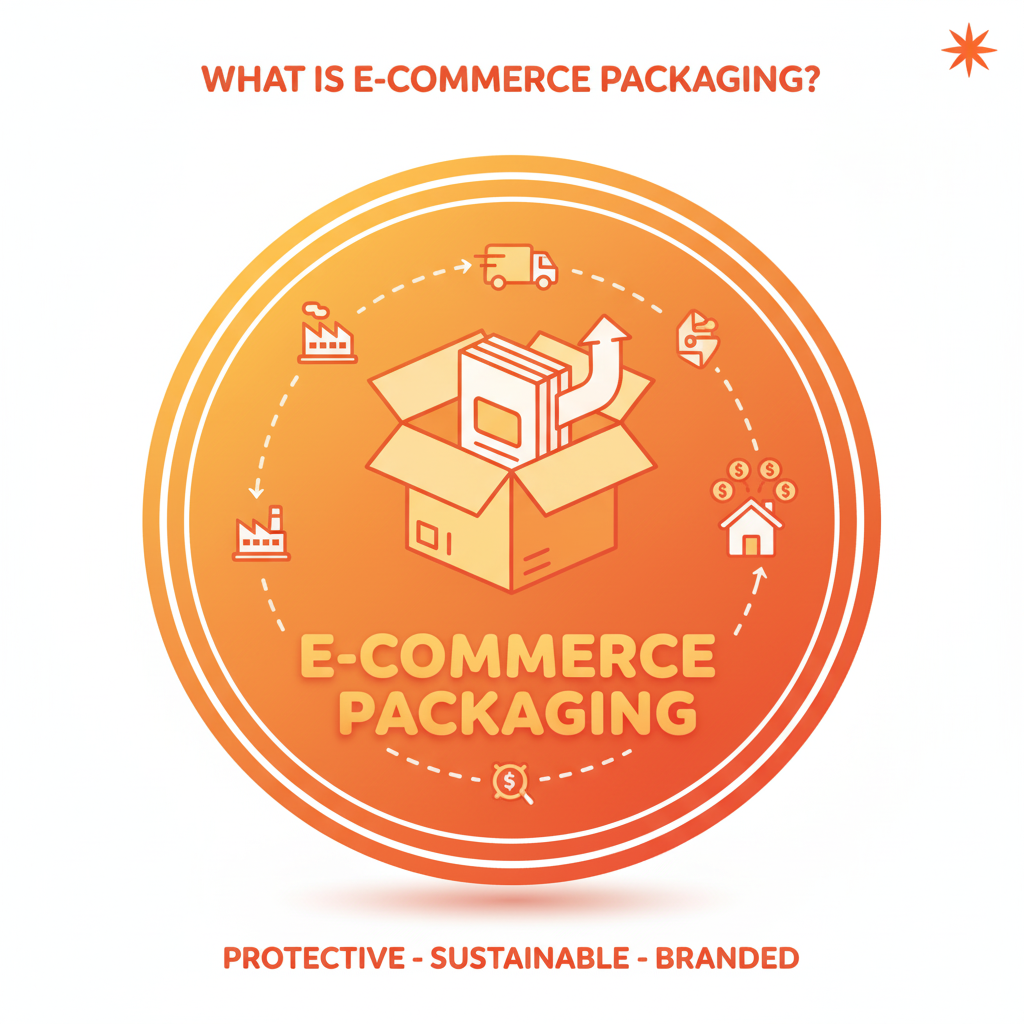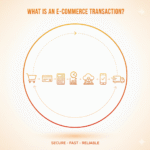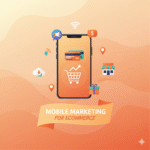When you order something online maybe a new phone case, a t-shirt, or even groceries it arrives neatly packed at your doorstep. That outer box or bag it comes in? That’s e-commerce packaging.
But here’s the thing: e-commerce packaging isn’t just about wrapping a product. It’s about protecting, branding, and creating an experience that shapes how customers perceive your online store.
Let’s dive deep into what it really means, why it’s so important in today’s digital marketplace, and how smart packaging can actually boost your business growth.
What Exactly Is E-Commerce Packaging?
In simple terms, e-commerce packaging refers to all the materials and design elements used to prepare, protect, and present a product that’s sold and shipped through an online store.
It includes everything from the outer box or courier bag to the inner wrapping, tape, inserts, labels, and branding that go with the product.
The goal of e-commerce packaging is threefold:
- Protect the product from damage during shipping.
- Promote the brand through visual design and presentation.
- Enhance customer experience when they unbox the order.
Think of it as your store’s first physical handshake with the customer — even though your business is online.
Why E-Commerce Packaging Matters More Than You Think
In a physical store, customers can touch, feel, and inspect products before buying. But online, the first physical interaction they have with your brand happens when the product arrives. That makes your packaging incredibly important.
Here’s why it matters so much:
1. First Impressions Count
When a customer receives your parcel, they instantly form an opinion based on how it looks and feels. A well-designed, neat, and secure package builds trust, while a damaged or poorly packed one can ruin the entire experience — even if the product is good.
2. Protects the Product
E-commerce shipments travel through multiple warehouses, delivery trucks, and handling points. Without proper packaging, even the best products can get damaged in transit.
Strong packaging ensures the item reaches the buyer in perfect condition — reducing returns and complaints.
3. Builds Brand Identity
Your packaging isn’t just functional; it’s also an extension of your brand. A customized box, logo, or thank-you note makes the customer feel valued.
That’s why big brands like Amazon, Apple, and Myntra invest heavily in packaging design — it leaves a lasting impression.
4. Enhances Customer Experience
The unboxing experience has become a major part of online shopping. People even record unboxing videos and post them online — free marketing for you!
Good packaging turns a simple purchase into a moment of delight.
5. Supports Sustainability
Eco-friendly packaging shows customers you care about the planet. With growing awareness around plastic waste, many consumers now prefer brands that use recyclable or biodegradable materials.
Types of E-Commerce Packaging
Not all products need the same kind of packaging. What works for a smartphone won’t work for a box of cookies. That’s why e-commerce packaging comes in various forms depending on product type, size, and fragility.
Here are the most common types:
1. Corrugated Boxes
These are the classic cardboard boxes you see everywhere.
- Best for: Electronics, shoes, clothing, books.
- Advantages: Durable, recyclable, customizable.
- Tip: Choose double-wall corrugated boxes for fragile items.
2. Padded Mailers and Envelopes
These are lightweight envelopes lined with bubble wrap or foam.
- Best for: Small, lightweight products like accessories, cables, or cosmetics.
- Advantages: Cost-effective, easy to handle, reduces shipping weight.
3. Poly Mailer Bags
Flexible plastic bags that are waterproof and tamper-resistant.
- Best for: Clothing, soft goods, and non-fragile items.
- Advantages: Lightweight, weatherproof, affordable.
- Eco Tip: Go for biodegradable or compostable poly mailers.
4. Custom Branded Boxes
These boxes are printed with your brand’s logo, tagline, or colors.
- Best for: Premium or gift products.
- Advantages: Enhances brand identity and improves unboxing experience.
5. Rigid Boxes
These are sturdy, luxury-style boxes used for high-end products.
- Best for: Watches, jewelry, or electronics.
- Advantages: Elegant and protective, great for presentation.
6. Sustainable or Recyclable Packaging
Made from eco-friendly materials like recycled cardboard or paper pulp.
- Best for: Brands focused on sustainability.
- Advantages: Reduces carbon footprint and attracts eco-conscious customers.
Inner Packaging Components That Matter
E-commerce packaging isn’t just about the outer layer. The inside also plays a big role in protecting the product and enhancing its appeal.
1. Protective Fillers
- Bubble wrap, paper wraps, air cushions, or foam inserts keep products secure during transit.
- Use biodegradable fillers whenever possible.
2. Brand Inserts
- Include a thank-you card, coupon code, or product care guide.
- It’s a small touch that builds connection and repeat sales.
3. Sealing Material
- High-quality packaging tape or branded seals prevent tampering.
- Reinforced corners and edges add extra strength.
4. Labels and Stickers
- Shipping labels, barcodes, and “Fragile” stickers are essential for logistics.
- Branded stickers can make the packaging more appealing.
The E-Commerce Packaging Process (Step-by-Step)
To understand how e-commerce packaging works behind the scenes, let’s go through the general process used by online sellers.
- Product Selection:
The item is picked from the warehouse or inventory. - Quality Check:
The product is inspected for any damage or defects. - Primary Packaging:
The product is placed in its main box or protective wrap. - Secondary Packaging:
The primary package is then placed inside an outer shipping box or mailer. - Labeling:
Shipping label, barcode, and customer address are attached. - Sealing and Quality Assurance:
Package is sealed securely and checked for tampering. - Dispatch and Tracking:
Package is handed to the courier, and the customer receives tracking details.
Importance of Sustainable E-Commerce Packaging
Let’s talk about something increasingly important sustainability.
With millions of parcels shipped daily, e-commerce packaging generates massive waste. Customers and governments are now pushing for eco-friendly solutions.
Here’s why sustainable packaging is becoming non-negotiable:
- Consumer Trust: 70% of customers prefer buying from eco-conscious brands.
- Cost Efficiency: Recyclable materials can lower long-term costs.
- Compliance: Some countries now regulate excessive plastic use in packaging.
- Brand Image: Sustainability helps brands stand out in a crowded market.
Sustainable Options to Consider:
- Recycled cardboard boxes.
- Compostable mailers.
- Paper-based tapes and fillers.
- Minimal packaging design to reduce waste.
Even small e-commerce brands can make an impact by switching to sustainable options. It’s good for business and the planet.
The Role of Branding in E-Commerce Packaging
Packaging isn’t just functional — it’s emotional.
Every color, logo, and message you print on your box tells a story about your brand. It’s your silent salesperson.
Why Branding on Packaging Matters:
- Increases brand recall: Customers remember your store next time they shop.
- Creates shareable moments: People love posting aesthetic unboxing photos online.
- Builds trust: A professional-looking package feels reliable and premium.
Even simple touches like custom tape, logo stickers, or eco-friendly labels can make your brand feel thoughtful and unique.
Common Packaging Mistakes Online Sellers Should Avoid
E-commerce packaging can make or break your customer’s experience. Here are a few mistakes to avoid:
- Overpacking:
Using too much material increases cost and waste.
Go for minimal yet secure designs. - Ignoring Branding:
Plain brown boxes work, but branded packaging creates a memorable impact. - Weak Sealing:
Poorly sealed boxes lead to damage or tampering. Always double-check before dispatch. - Not Testing Durability:
Packages should survive rough handling and rain. Test them before scaling up. - No Return Instructions:
Always include easy return information — it builds trust and confidence.
How E-Commerce Giants Use Packaging to Their Advantage
Let’s take a few real-world examples.
Amazon:
Focuses on functionality. They use frustration-free, recyclable packaging that’s easy to open and environmentally responsible.
Apple:
Uses minimalistic, premium materials that make unboxing feel luxurious. Every fold and flap is part of the experience.
Myntra:
Prints vibrant branding on packaging and includes personalized thank-you messages, making the unboxing feel personal.
Even if you’re a small business, you can take inspiration from these brands — it’s not about spending big, it’s about attention to detail.
Future of E-Commerce Packaging
The future is all about smart, sustainable, and personalized packaging.
What’s Coming Next:
- Smart Packaging: QR codes, NFC tags, and AR experiences for interactive engagement.
- Biodegradable Materials: Mushroom-based and seaweed-based packaging are being developed.
- Automation: AI-driven packaging systems for faster, precise fulfillment.
- Personalization: Custom packaging for repeat customers or special events.
In short, packaging is moving from being a protective layer to a complete brand experience.
Key Takeaways
- E-commerce packaging is how products are prepared, protected, and presented for online deliveries.
- It plays a major role in product safety, branding, and customer satisfaction.
- The main packaging types include corrugated boxes, mailers, envelopes, and sustainable materials.
- Eco-friendly and branded packaging are the future of online commerce.
- Even small improvements like branded tape or thank-you notes can significantly elevate your customer experience.
Your packaging speaks before your product does. So make it count.
Conclusion
E-commerce packaging might seem like a small detail, but it’s actually a powerful marketing tool and customer touchpoint.
In a digital world where buyers can’t touch your product before buying, the box it arrives in becomes your brand’s physical identity.
Good packaging protects. Great packaging connects.
If you’re running an online store, investing in thoughtful, sustainable, and well-branded packaging isn’t an extra expense it’s part of building long-term trust and loyalty.
Because at the end of the day, people don’t just unbox products they unbox experiences.


